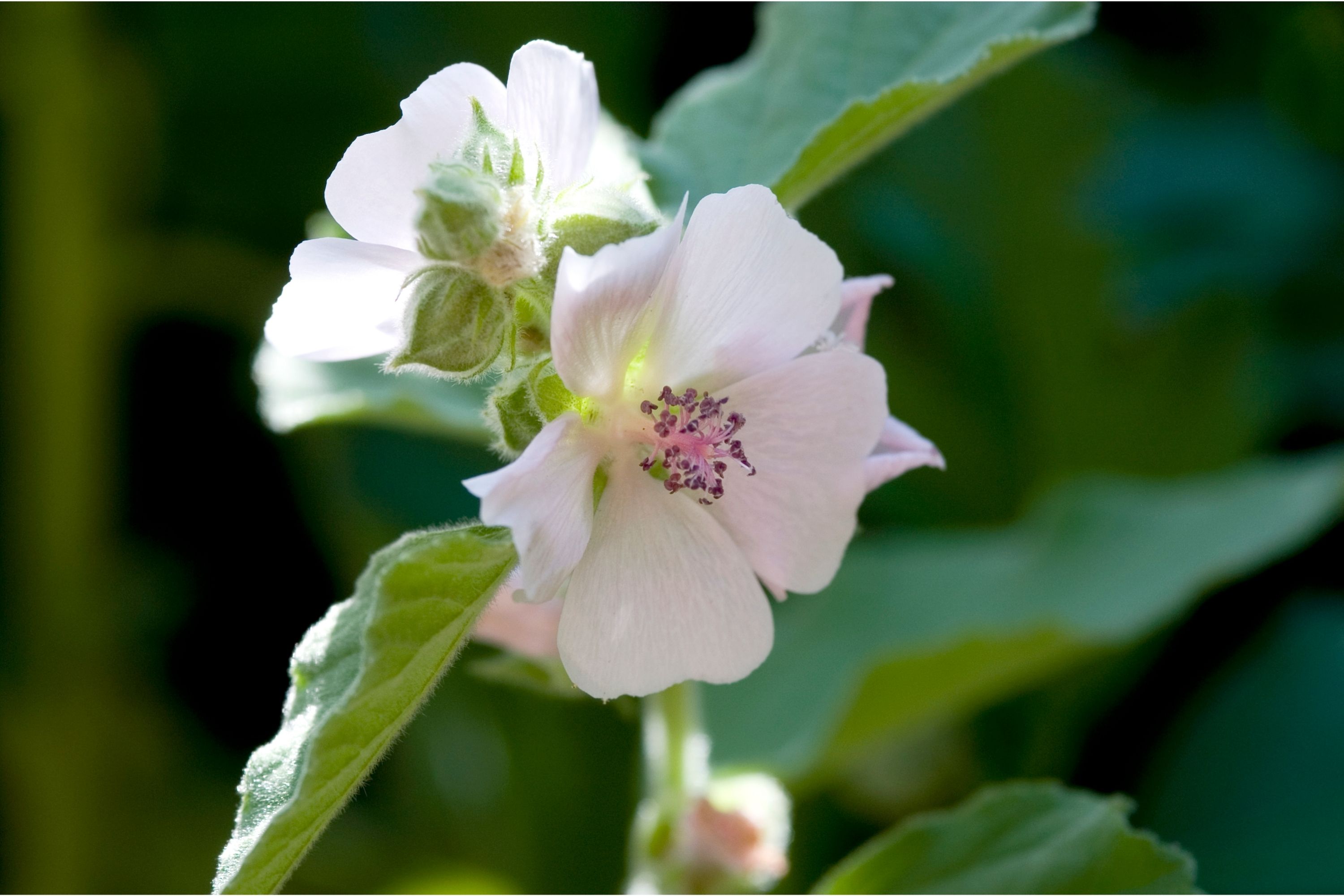Marsh mallow
(Althaea officinalis)

Description
Althaea officinalis, the marsh mallow or marshmallow, is a species of flowering plant indigenous to Europe, Western Asia and North Africa, which is used in herbalism and as an ornamental plant. A confection made from the root since ancient Egyptian times evolved into today's marshmallow treat, but most modern marshmallow treats no longer contain any marsh-mallow root. This herbaceous perennial has stems which die down in the autumn, They typically grow 90 to 120 cm (3 to 4 ft), but can reach 2.0 m (6+1⁄2 ft) and put out only a few lateral branches. The leaves are shortly petioled, roundish, ovate-cordate, 50 to 75 mm (2 to 3 in) long, and about 30 mm (1+1⁄4 in) broad, entire or three to five lobed, irregularly toothed at the margin, and thick. They are soft and velvety on both sides, due to a dense covering of stellate hairs. The lilac-pink flowers are shaped like those of the common mallow, but are smaller and of a pale colour, and are either axillary, or in panicles, more often the latter. The stamens are united into a tube, the anthers, kidney-shaped and one-celled. The flowers are in bloom during August and September, and are followed, as in other species of this order, by the flat, round fruit which are popularly called "cheeses". The common mallow is frequently called "marsh mallow" in colloquial terms, but the true marsh mallow is distinguished from all the other mallows growing in Great Britain by the numerous divisions of the outer calyx (six to nine cleft), by the hoary down which thickly clothes the stems and foliage, and by the numerous panicles of blush-coloured flowers, paler than the common mallow. The roots are perennial, thick, long and tapering, very tough and pliant, whitish yellow outside, white and fibrous within. The Latin specific epithet officinalis indicates plants with some culinary or medicinal value. Chemical constituents include altheahexacosanyl lactone (n-hexacos-2-enyl-1,5-olide), 2β-hydroxycalamene (altheacalamene) and altheacoumarin glucoside (5,6-dihydroxycoumarin-5-dodecanoate-6β-D-glucopyranoside), along with the known phytoconstituents lauric acid, β-sitosterol and lanosterol. Marshmallows are used in gardening as ornamental plants. Like most herbaceous perennials they require a sunny or partially-shaded position in moist, well-drained soil.
Taxonomic tree:







